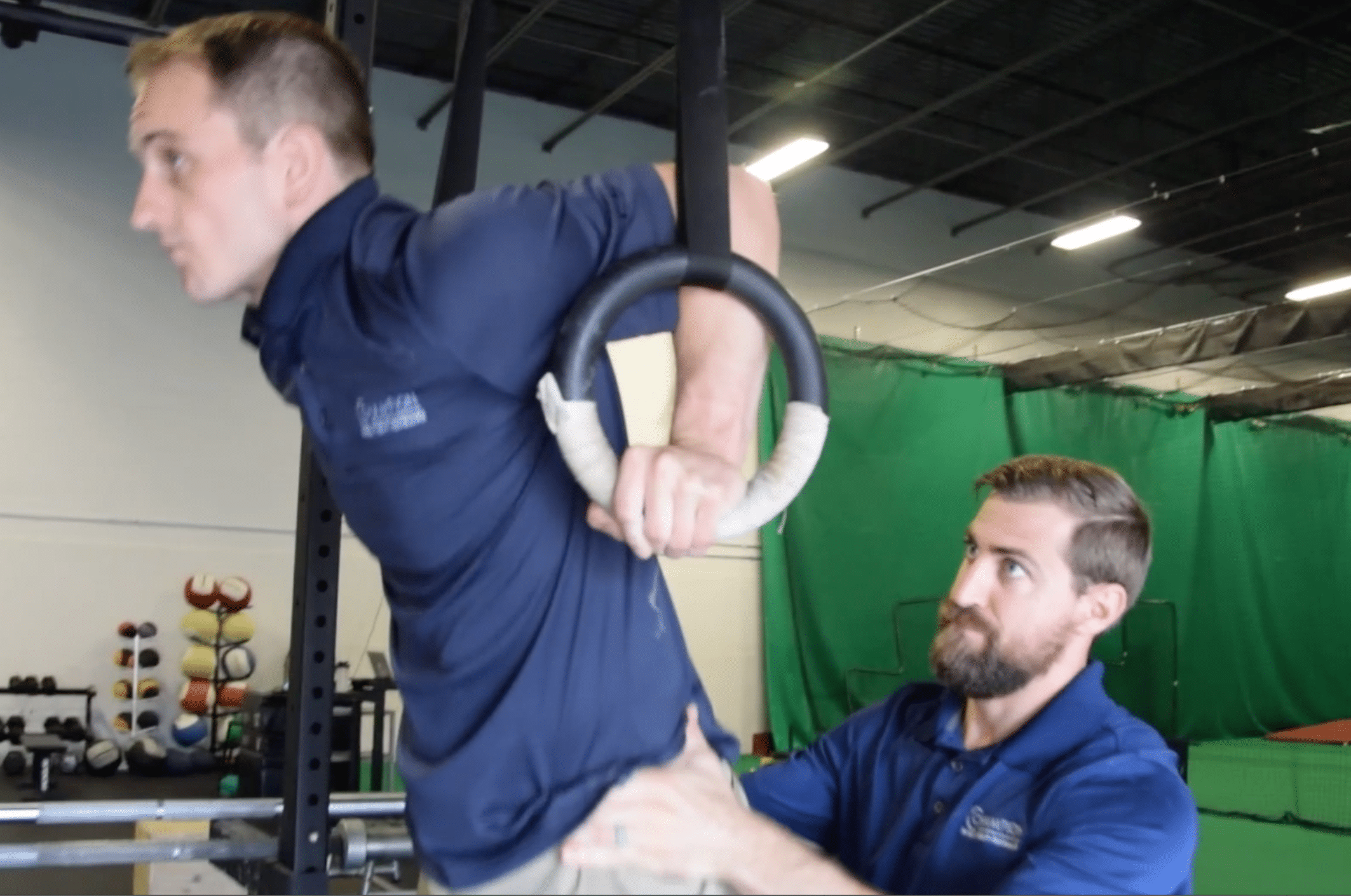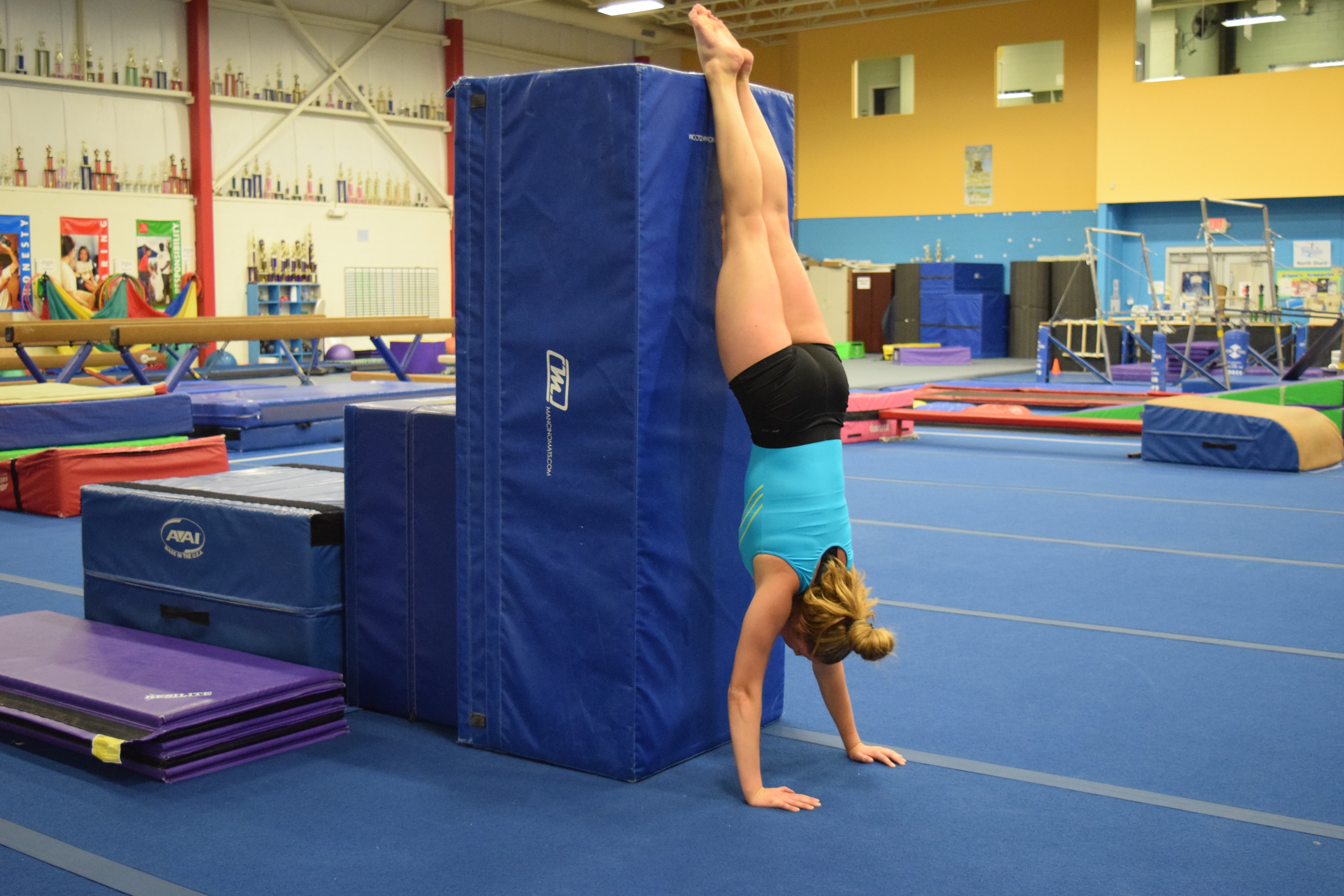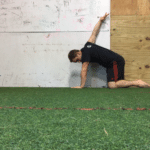Swinging/Muscle Up/Kipping Advice To CrossFit Athletes From a PT and Gymnastics Coach
A few months ago, I started this series on some of my thoughts on injury prevention advice for people training gymnastics movements in CrossFit. In Part 1 I talked about general concepts, and in Part 2 I offered some ideas related to handstands. In honor of Power Monkey Camp 4.0 going down in just 5 days, I wanted to share some thoughts related to tapping mechanics seen in pull ups, muscle ups, and advanced bar/ring work. I think these things are big root causes for shoulder pain, low back pain, and performance issues in higher level skills.
You Need Full, Active, Overhead Mobility
By far the biggest issue I see when I treat CrossFit Athlete’s for shoulder pain is they tend to lack active overhead mobility. Many of them can get to a passive range using a box stretch, band, or with a partner. In my opinion there are many other very important steps that must be taken after these passive methods to increase overhead mobility. The first step is screening the motion first and find the root cause. It could be in various soft tissues, the thoracic spine, the lower cervical spine, a lack of core control, or a combination of many things. I highly suggest people that are constantly struggling with this find a good healthcare provider or movement coach to find the main issue. Once a mobility change is made either with an appropriate exercise or manual therapy, build that new motion into a pattern and finally (when ready), build that into some sort of skills specific drill like tapping on a bar. I think this is how we make long-term changes in overhead mobility and more importantly make notable impacts on the nervous system for gymnastics skills. Here is how I like to screen for overhead mobility.
If this a struggle and there is a mobility issue, it’s important to address it. My good friend Dr. Dan Pope and I share a lot of similar ideas on how to work overhead mobility. Here is a 5 minute video he put together with some great drills. I would suggest people use a test-restest model (either my seated wall series screen or Dan’s) before and after each intervention to see what you may need more of.
Once good mobility gains are seen (or if you didn’t have a mobility issue in the first place), I like to then cement that range of motion using some isolated overhead motor control drills. Here are two of my favorites that I use for swinging or overhead lifting days. The pattern assist in the first one (same reach, roll, lift drill from Dan’s video) is to teach the full overhead range of motion if someone has a difference between their active and passive range.The PVC series is to build them into both arms working together, and you can also go with Dan’s pressing drill.
Global Shaping, Body Tension, and Basics are Crucial
This next part builds right off of the overhead mobility and basic motor control drills from above. The second biggest problem I think people related to gymnastics swinging skills, is that they have never spent time developing the proper basics and motor control around shaping/body tension during swinging. In gymnastics, we spend years and years teaching young gymnasts the concept of tight core positions, hollow/arch shaping, and how to transition between tight shapes for skill work. In CrossFit, if you don’t develop these shapes and transfer them to skills I feel it will inevitably be your limiting factor. I think this is where we see lots of injuries start to come up as the shoulders and lower back get beat up in muscle ups, pull ups, and so on. Not to mention, it’s the fastest way to bleed out energy and become metabolically inefficient during high rep gymnastics workouts.
Following the steps above to gain the needed mobility and also the lower threshold control / shaping awareness, the next step to improve gymnastics skills is start with mastering the basics. Here’s Dave Durante working through some of these hollow, arch, and transition drills that are essential to all swinging skills seen in CrossFit.
Then, here are some great gymnastics tapping drills from the Power Monkey Staff to come full circle and really tie things together.
Concluding Thoughts
From here, you can then work your way up the ladder and start to really get after some fun high level skills. Not to mention, in my opinion those people that apply these concepts will be at much less risk for injury and will also see huge jumps in their performance. Give these different things a try, and see where you may need more work along the continuum. For anyone heading down to Power Monkey next week, can’t wait to see you there! Take care,
Dr. Dave Tilley, DPT







